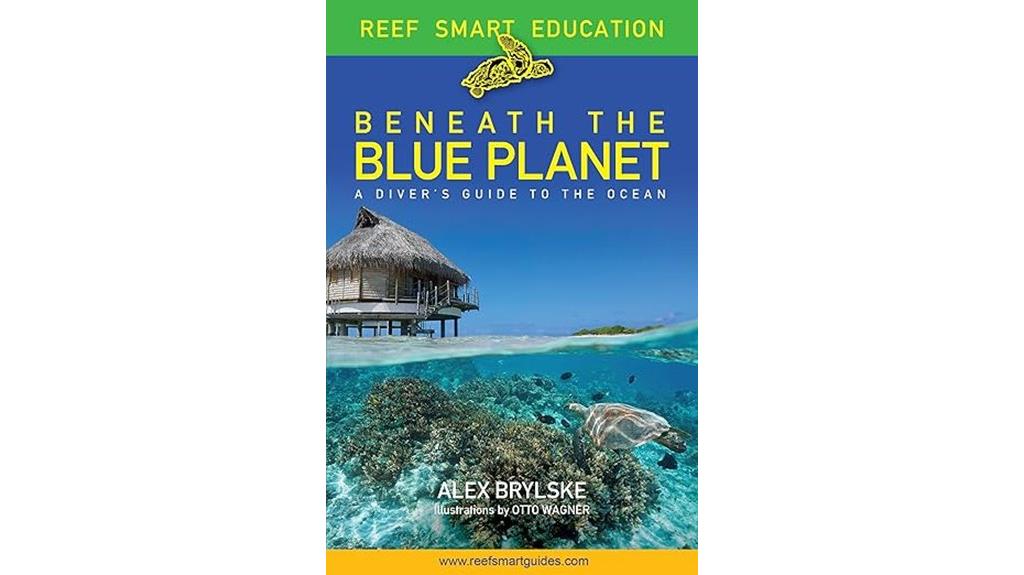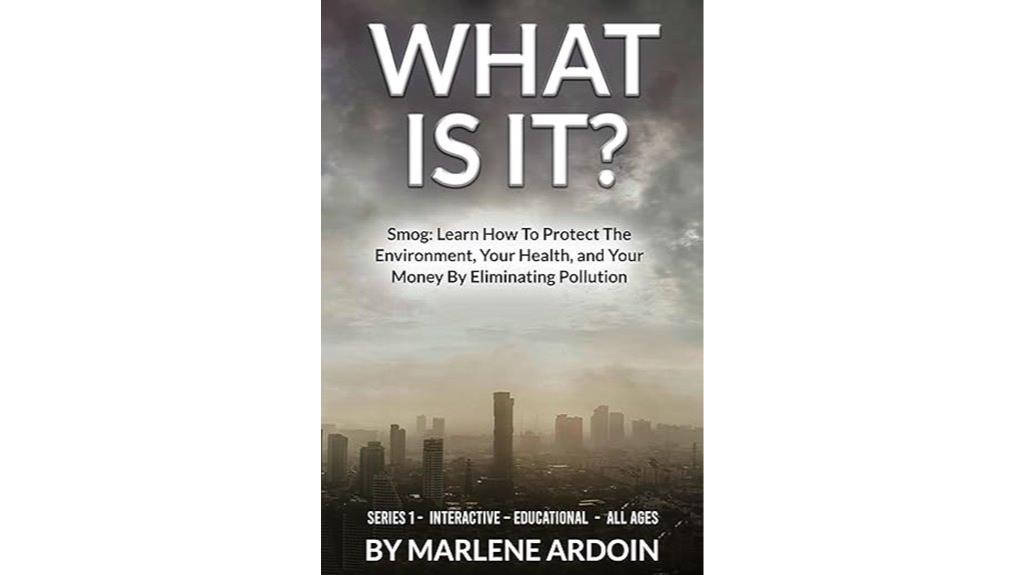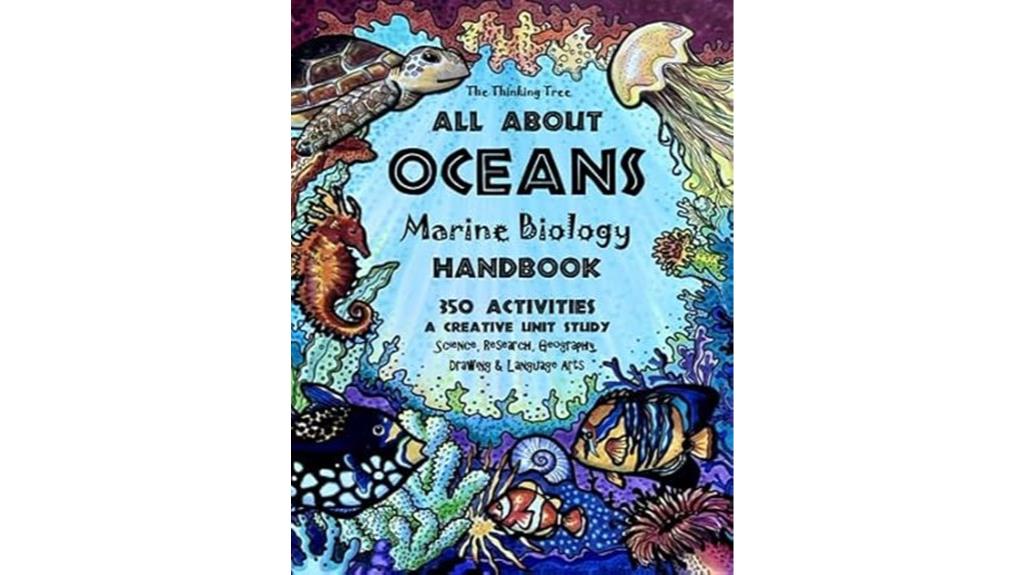Table of Contents Show
There may be products. Products are independently selected by our editors. We may earn an affiliate commission from the links with no charge to you, example: as Amazon Affiliate.
Disclaimer: We may earn an affiliate commission from the links with no charge to you.
We’ve curated essential ocean conservation books for 2025 that combine expert research with engaging storytelling. Our selections include “Beneath the Blue Planet,” offering thorough diving insights. Each book features stunning visuals, practical conservation strategies, and interactive elements to inspire action. From marine biology handbooks to children’s board books, these titles cater to all ages and expertise levels. Let’s explore how these groundbreaking works can transform your understanding of ocean conservation.
Key Takeaways
- Expert-recommended ocean conservation books combine scientific accuracy with engaging narratives to educate readers about marine ecosystems and conservation challenges.
- Books featuring practical action steps, like reducing plastic waste and supporting sustainable seafood, are essential for transforming knowledge into environmental change.
- Visual elements such as high-quality underwater photography and informative diagrams enhance understanding of marine biology concepts across different age groups.
- Authors with advanced degrees in marine biology and active involvement in conservation initiatives provide the most credible and up-to-date information.
- Interactive components and hands-on activities in conservation books help readers develop a deeper connection with marine conservation efforts.
Beneath the Blue Planet: A Diver’s Guide to Ocean Conservation

Among the standout ocean conservation books for 2025, “Beneath the Blue Planet” serves as an essential guide for both diving enthusiasts and conservation-minded readers. Dr. Brylske’s expertise shines through the conversational writing style, making complex marine topics accessible.
We’re particularly impressed by the book’s thoughtful organization. From physics fundamentals to coral reef formation, each chapter includes learning objectives and engaging features like “Did You Know” and “Eco Tip” sections. The high-quality photos and illustrations aren’t just beautiful – they’re technically precise, helping readers grasp key concepts. Whether you’re a marine biology student or simply passionate about ocean preservation, this thorough guide delivers remarkable value.
Best For: Marine biology students, scuba divers, and conservation enthusiasts seeking a comprehensive yet accessible guide to ocean ecosystems and preservation.
Pros:
- Excellent balance of technical content and accessible writing style with helpful learning features
- High-quality visuals including photos, illustrations, and technical charts that enhance understanding
- Well-structured format with clear learning objectives and supplementary sections like “Did You Know” and “Eco Tips”
Cons:
- May be too detailed for casual readers seeking basic ocean information
- Technical sections on physics and chemistry might be challenging for some readers
- The comprehensive nature of the content may overwhelm those looking for quick reference material
Smog: Learn How To Protect The Environment From Pollution

Kids and families exploring environmental education will find “What Is It? Smog” an engaging introduction to air pollution awareness. Led by a wise owl character, this book combines storytelling with 25 hands-on activities focused on environmental protection.
We’re impressed by how the book makes complex topics accessible through interactive guessing games and vivid illustrations. While some sections might be too simple for older readers, it’s an excellent resource for teaching children about smog’s health effects and prevention strategies. The practical tips on using air purifiers, planting trees, and reducing personal pollution make this 4-star rated book valuable for parents and educators alike.
Best For: Families with young children looking to introduce environmental awareness and air pollution concepts through interactive learning and activities.
Pros:
- Engaging storytelling approach with a wise owl character makes complex environmental topics accessible
- Includes 25 practical family activities for environmental protection and conservation
- Combines educational content with interactive elements and vivid illustrations
Cons:
- Content may be too basic for older children or advanced readers
- Contains some grammatical issues and typos
- Some interactive elements and illustrations could be off-putting
All About Oceans Marine Biology Handbook (350 Activities)

The All About Oceans Marine Biology Handbook offers 350 engaging activities that make it an excellent choice for elementary and younger middle school students exploring marine biology. We’ve found this thorough guide combines science, research, geography, drawing, and language arts in an accessible format.
While we appreciate the diverse content covering marine creatures, ocean zones, and creative elements like poetry for copywork, we must note some limitations. The material isn’t challenging enough for high school students, and there are reports of printing quality issues. Despite these drawbacks, we’re encouraged by positive feedback from parents whose children have shown increased enthusiasm for ocean-themed learning.
Best For: Elementary and early middle school students interested in marine biology who benefit from hands-on activities combining science, art, and language learning.
Pros:
- Comprehensive coverage of marine life topics through 350 diverse activities
- Integrates multiple subjects including science, geography, art, and language arts
- Effectively engages young students through creative and interactive approaches
Cons:
- Not suitable for high school level education
- Reported printing quality issues affecting usability
- Limited depth of content for advanced learners
Factors to Consider When Choosing Ocean Conservation Books to Kick Off 2025
As we search for the best ocean conservation books to start 2025, we’ll need to weigh several key factors including age-appropriate content, reading levels, and visual elements that enhance learning. We’re looking for titles that combine strong environmental education value with authors who bring proven expertise and scientific credibility to their work. Interactive components like activities, experiments, and discussion questions will help readers connect more deeply with ocean conservation topics, making the material both meaningful and memorable.
Age Range and Reading Level
When choosing ocean conservation books for 2025, matching the right age range and reading level with your intended audience is essential for meaningful engagement. We recommend looking for books that align with specific developmental stages – younger readers (ages 4-8) need simpler language and more illustrations, while older readers can handle more complex concepts.
For our youngest ocean advocates, we’ll want to select books with interactive elements and hands-on activities that make environmental themes accessible. It’s helpful to look for titles that include glossaries or clear definitions of marine terminology. By considering these factors alongside our educational goals, whether they’re promoting environmental stewardship or building science literacy, we can select books that’ll effectively connect with readers at their level of understanding.
Visual Learning Elements
Visual elements play an essential role in selecting ocean conservation books for 2025, with high-quality photos, illustrations, and diagrams serving as powerful tools for enhanced learning. We’ve found that books featuring vibrant underwater photography and detailed marine life illustrations help readers better understand complex oceanic concepts.
When choosing your next ocean conservation book, look for those that incorporate clear charts and graphs to explain scientific data. We’re particularly drawn to books that use illustrated characters or storytelling elements, as they make the content more engaging for younger readers. Interactive visuals like pull-out diagrams or innovative layouts can transform passive reading into active exploration. These visual learning elements don’t just make the books more appealing – they’re vital for comprehending marine ecosystems and conservation strategies.
Environmental Education Value
The environmental education value of ocean conservation books stands as a cornerstone factor in our selection process for 2025. We’re looking for titles that effectively break down complex marine ecosystems while highlighting their essential role in global health and biodiversity.
When we evaluate books, we prioritize those offering clear, actionable conservation strategies that readers can implement in their daily lives. We’ve found that the most impactful books combine scientific insights with engaging narratives, making ocean conservation both accessible and relatable. They should include interactive elements that reinforce learning through hands-on activities.
We’re also considering how each book serves different age groups, ensuring our recommendations provide appropriate educational experiences that can spark lasting interest in marine biology and environmental stewardship.
Author Expertise and Credibility
Determining an author’s expertise and credibility forms the foundation of our book selection criteria for 2025’s ocean conservation titles. We’re looking for authors who’ve earned advanced degrees in marine biology or have spent years conducting field research in our oceans. Their track record of peer-reviewed publications and contributions to major conservation initiatives tells us they’re well-versed in the subject matter.
We prioritize writers who actively engage with the scientific community and stay current with emerging research. Authors who regularly participate in public speaking engagements or lead educational programs often excel at breaking down complex topics. We’ve also found that writers directly involved in conservation projects or partnering with environmental organizations provide the most practical, actionable insights for readers committed to ocean preservation.
Interactive Learning Components
Interactive elements serve as essential criteria when evaluating our ocean conservation book selections for 2025. We’re looking for books that transform complex marine topics into engaging experiences through activities, games, and thought-provoking discussion prompts. The best selections will include hands-on projects that encourage readers to create art, take environmental action, or participate in real-world conservation efforts.
We’ve prioritized books that combine clear visual aids with interactive components, making ecological concepts more digestible and memorable. Each book should offer a structured learning path with defined objectives, guiding readers through marine biology and conservation topics. When you’re choosing your next ocean conservation read, look for these interactive features that’ll help you connect more deeply with the material and inspire continued exploration.
Scientific Content Depth
Scientific content depth stands as a critical benchmark for our 2025 ocean conservation book selections. We’re looking for works that incorporate current marine research and established ecological principles, ensuring readers get accurate, up-to-date information.
We’ll prioritize books that thoroughly cover fundamental oceanography concepts, from ocean currents to marine ecosystems and chemical processes. The best selections will present complex scientific data through well-structured chapters with clear learning objectives, making the content accessible without oversimplifying it.
When evaluating scientific depth, we’re focusing on books that feature extensive visual aids like charts and diagrams. These elements help readers grasp intricate concepts while providing evidence-based conservation strategies they can implement. Each recommendation must balance scholarly rigor with practical applications in marine preservation.
Practical Conservation Applications
The practical value of conservation books forms a key selection criterion for our 2025 list. We’re looking for titles that go beyond theoretical discussions to provide readers with concrete steps they can implement in their daily lives. These books should equip you with specific strategies to reduce ocean pollution and promote sustainable practices.
We prioritize books that include actionable checklists, step-by-step guides, and real-world examples of successful conservation initiatives. Whether it’s methods for reducing plastic consumption, supporting sustainable seafood practices, or participating in local beach cleanups, the selected books need to transform awareness into action. The best ocean conservation books don’t just inform – they empower readers with practical tools to become active participants in protecting our marine ecosystems.
Frequently Asked Questions
How Can I Get Involved in Local Ocean Conservation Efforts?
Let’s connect with our local marine conservation groups to make a real difference. We can start by searching online for nearby aquariums, environmental organizations, and coastal cleanup initiatives. Our coastal communities often need volunteers for beach cleanups, water quality monitoring, and educational outreach programs. We’ll find opportunities through social media, community boards, and environmental agencies’ websites. Local dive shops and marine centers also coordinate conservation activities.
What Percentage of Ocean Species Are Currently Endangered?
Did you know that it has been established we’ve only explored about 5% of our oceans, yet we’re already seeing alarming extinction rates? While it’s challenging to get an exact percentage, it is understood that roughly 17% of all marine species we’ve assessed are currently threatened with extinction. That includes over a third of sharks and rays, 33% of reef-building corals, and nearly 40% of marine mammals we share our oceans with.
Which Ocean Conservation Organizations Accept Volunteer Divers?
We’ve found several reputable organizations that welcome volunteer divers for ocean conservation efforts. Project AWARE, Reef Check, and PADI AWARE Foundation regularly accept certified divers for coral reef monitoring and cleanup activities. Coral Restoration Foundation trains divers to help restore damaged reefs, while Ocean Conservancy coordinates underwater debris removal. The Shark Research Institute and Marine Megafauna Foundation also offer diving opportunities for citizen science projects.
How Do Climate Change Policies Affect Marine Protected Areas?
Like a domino effect, climate change policies ripple through our marine protected areas (MPAs). We’re seeing how strong policies help MPAs by limiting fishing pressure, reducing coastal development, and protecting essential habitats. When policies are weak, we lose vital safeguards against ocean acidification, rising sea temperatures, and habitat destruction. That’s why we must advocate for climate policies that explicitly include MPA protection in their frameworks.
What Career Paths Are Available in Ocean Conservation Research?
We’ve seen numerous career paths open up in ocean conservation research. You can become a marine biologist, studying sea life and ecosystems, or an oceanographer focusing on ocean chemistry and physics. There’s also high demand for marine policy analysts, conservation technologists, and research divers. Don’t forget emerging roles in marine spatial planning, sustainable fisheries management, and coral reef restoration. Many positions combine fieldwork, lab research, and data analysis.
Conclusion
We’ve explored some amazing reads that’ll open our eyes to the delicate dance between humans and our ocean friends. These carefully curated books help us understand how we can be better stewards of our aquatic backyard. As we plunge into 2025, let’s embrace these resources to create positive ripples of change in our precious marine world. Together, we’ll help our blue planet thrive for generations to come.









